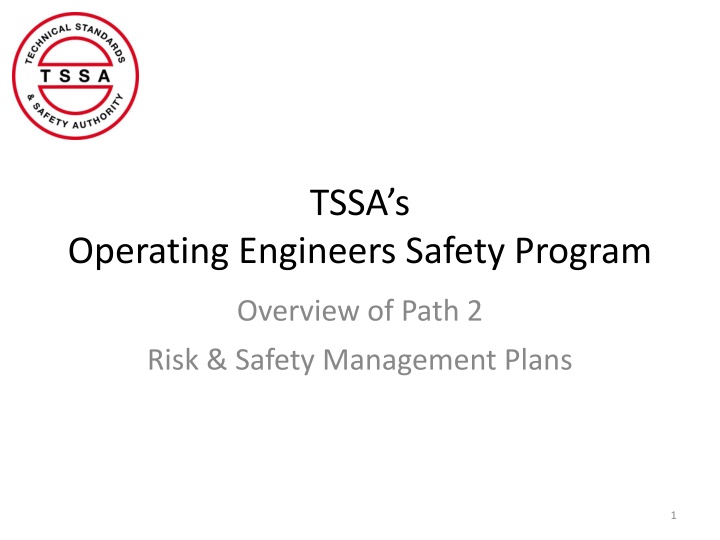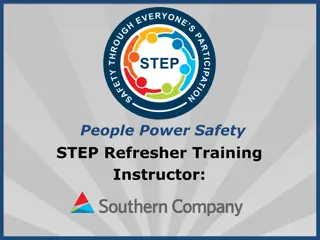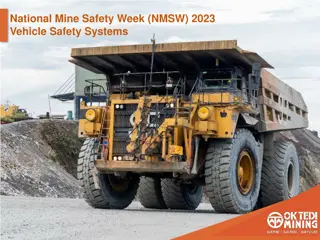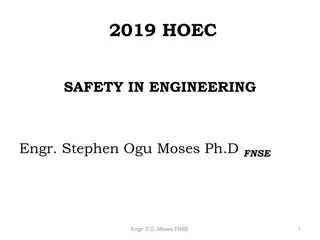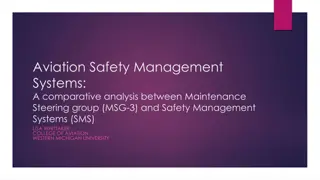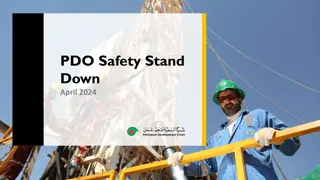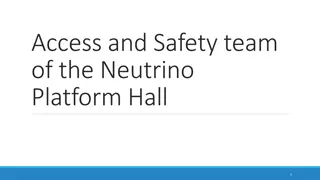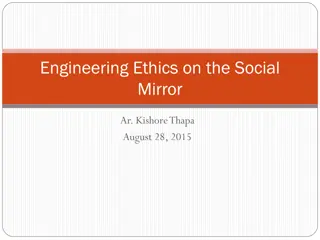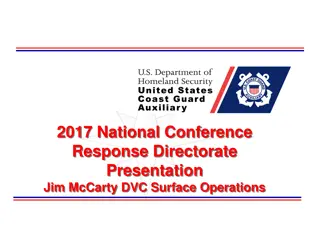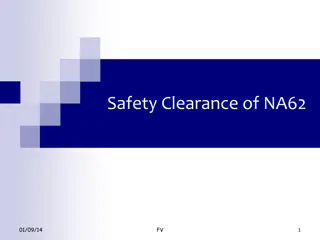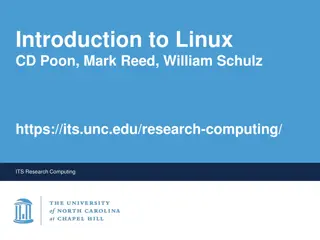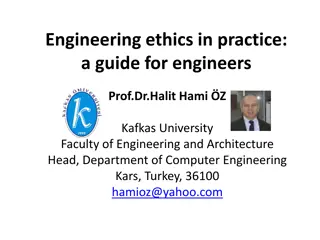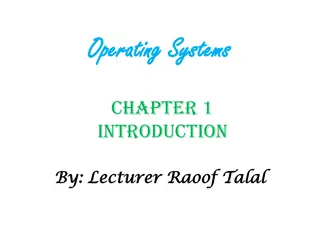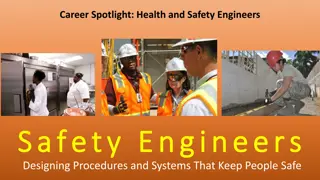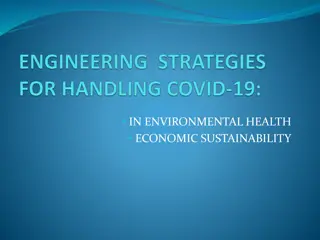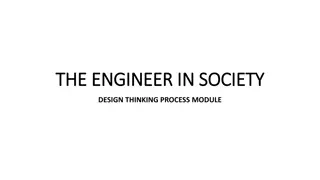TSSAs Operating Engineers Safety Program Overview
In this overview, learn about the risk and safety management plans associated with TSSA's Operating Engineers Safety Program. Explore the regulations, staff requirements, RSMP submission processes, and CSA Z767 Process Safety Management standards. Discover the pillars and elements of process safety management, examples of required process safety information, and more to ensure a comprehensive approach to safety in engineering operations.
Download Presentation

Please find below an Image/Link to download the presentation.
The content on the website is provided AS IS for your information and personal use only. It may not be sold, licensed, or shared on other websites without obtaining consent from the author.If you encounter any issues during the download, it is possible that the publisher has removed the file from their server.
You are allowed to download the files provided on this website for personal or commercial use, subject to the condition that they are used lawfully. All files are the property of their respective owners.
The content on the website is provided AS IS for your information and personal use only. It may not be sold, licensed, or shared on other websites without obtaining consent from the author.
E N D
Presentation Transcript
TSSAs Operating Engineers Safety Program Overview of Path 2 Risk & Safety Management Plans 1
Current Regulation: Staffing Based on kW New Regulation Path 1 Path 2 Staffing Based On: power technology pressure, temperature flammability toxicity public exposure No Staffing Prescription, per se requires site-specific Risk and Safety Management Plan 2
Path 2 RSMP RSMP to be based upon CSA Z767 Process Safety Management standard. RSMP to be submitted to TSSA. RSMP to be reviewed and accepted by TSSA. Acceptance of RSMP based in large party upon the plant s risk assessment of the worst case scenario that considers the following parameters: pressure, temperature and inherent stored energy technology use of flammable or toxic materials public exposure. 3
CSA-Z767-17 Process Safety Management Pillars and Elements Process Safety Leadership Understanding Hazards and Risks Review and Improvement Risk Management Process knowledge and documentation Training and competency Accountability Investigation Regulations, codes and standards Project review and design procedures MOC Audits process Process risk assessment and risk reduction Enhancement of process safety knowledge Process safety culture Process and equipment integrity Conduct of operations senior management responsibility Emergency management planning Key performance indicators Human Factors 4
CSA-Z767-17 Examples of Process Safety Information Required Drawings P&IDs Area electrical classification Safety plot plan with fire protection equipment Flame and flammable gas detection layout Toxic gas detection Cause and effects diagrams and logic narratives Ventilation and systems design Data Sheets Instrument data sheets Mechanical safety systems: PSV, hardwired trips, and guards Lists Line designation table Equipment lists Valve locking lists Designation of process safety-critical equipment Process interlocks Standards and Codes Design codes and standards employed SIS and SIF (safety requirements specification) Overpressure protection by system design information Reports Materials of construction and their suitability in handling process materials Corrosion hazard review reports Material selection diagram Incidents and near misses Other Emergency shutdown device design basis, valve list and test records SIF (part of SIS) test records Instrument grounding arrangement diagrams Corrosion allowance Data regarding ventilation system design Process control systems Critical alarms, systems, etc. 5
CSA Definitions of Interest Process safety culture the attitudes, values, norms, beliefs and behaviors that a particular group of people share with respect to risk and safety. Note: the essence of a positive culture is to bring continuous, positive improvements to process safety through a PSM program. Safety Instrumented system a distinct reliable system used to safeguard a process to prevent a catastrophic release of toxic, flammable or explosive chemicals [IEC 61508-1]. Note: a SIS loop is a system composed of sensors, logic solvers, and final control elements for the purpose of taking a process to a safe state, when predetermined conditions are violated [Adopted from: ISA S84.00.01]. Shutdown key a specialized table presenting process deviations (or causes) in rows and a set of process responses (or effects) in columns. Note: the intersection cell in the matrix defines relationship between the cause and the effect. 6
CSA Definitions of Interest Cont. Worst credible scenario the event scenario which has the highest consequence, and which is reasonably plausible in comparison with the facility risk threshold. Human factors the design and evaluation of tasks, jobs, environments, and systems to optimize them with human wellbeing performance. Note: it is intended to ensure work environments are compatible with human needs and limits and abilities. 7
How to Achieve TSSA Path 2 RSMP Compliance 1. Figure out the CSA Z767 Standard 2. Assemble the Information 3. Institute the Required PSM Policies 4. Do the Risk Assessment 5. Prepare the Necessary Procedures 6. Put All of the Above Into the RSMP 7. Conduct Staff Orientation and Training 8. Submit the RSMP to TSSA 9. Review and Discussion 10. Acceptance by TSSA 8
PSM Policies 1. Overall PSM Policy 2. Conduct of Operations Policy 3. Maintenance, Inspection and Testing Policies 4. New Project and Management of Change Policies 5. Training and Competency Policy 6. Incident Reporting and Investigation Policies 7. Key Performance Indicators 8. Audit Policy 9
Risk Assessment Risk Register Likelihood and Impacts Consider Effect of On- Site Staff Consider Effect of Engineering Controls Selection and Modelling of Worst Case Scenario Consider Effect of On- Site Staff Consider Effect of Engineering Controls Determine Impact on Public (Injury or Death) Consider Effect of On- Site Staff Consider Effect of Engineering Controls Consider Measures to Cost-Effectively Reduce Risk If Any Cost-Effective Measures: Plan, Schedule, Install, Monitor These Redo Risk Assessment Every 5 Years (unless New Project or Material Change) 10
Procedures Conduct of Operations Maintenance, Inspection and Testing New Projects and Management of Change Training Emergency Response Incident Reporting and Investigation Audit 11
Example RSMP Table of Contents 1. 2. 3. 4. 5. 6. Process Safety Management Policies Information (referenced to document system) Results of Risk and Human Factors Assessment (report appended) Procedures (appended) Training and Staffing Culture and Continuous Improvement Appendices Risk assessment Procedures Training Plan and Log 12
TSSA Acceptability Distinctions By Material High pressure steam Low pressure steam or hot water Natural gas Fuel oil Chlorine (or other water treatment) Ammonia Flammable refrigerants Other hazardous material By Other Factors Safety Instrumented System Automatic shutdown key Exposure to public from worst case 13
